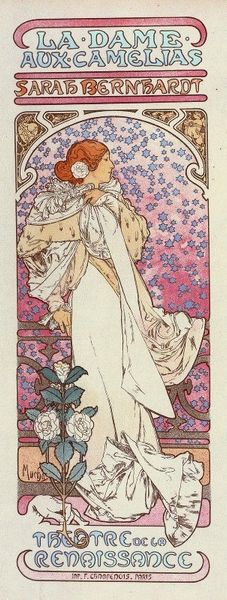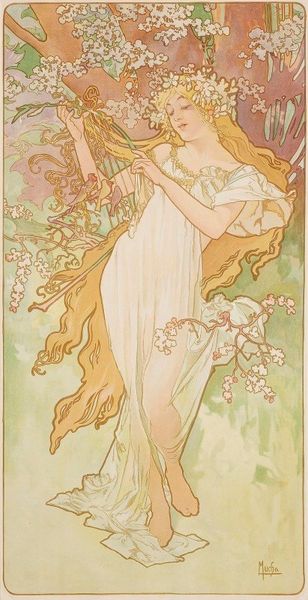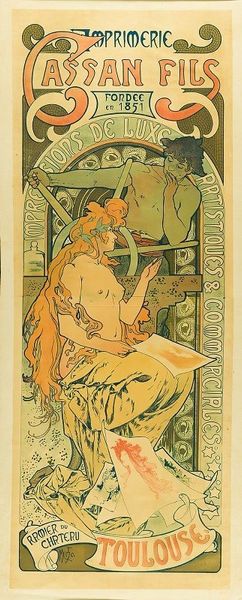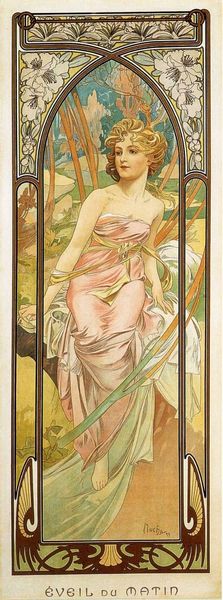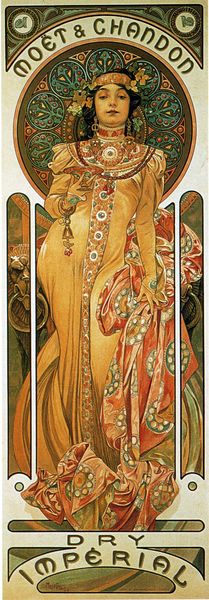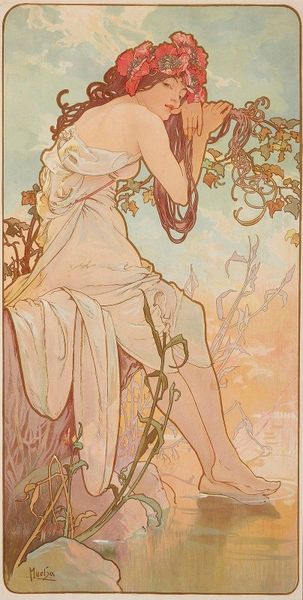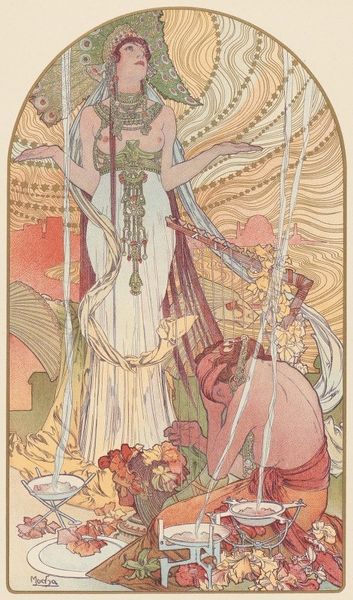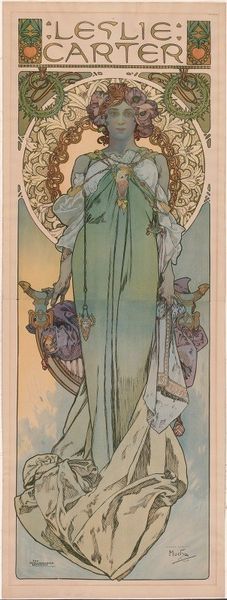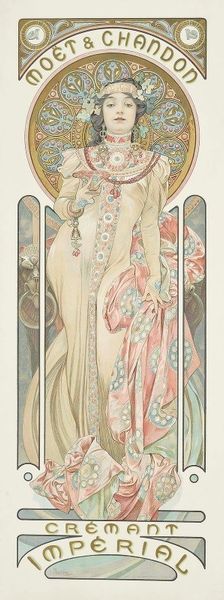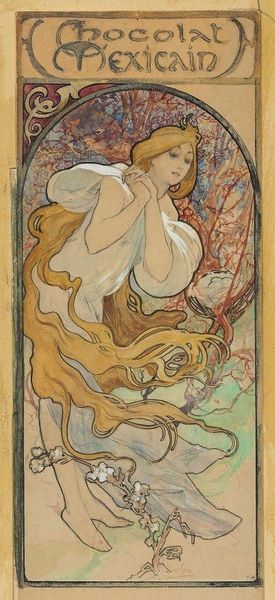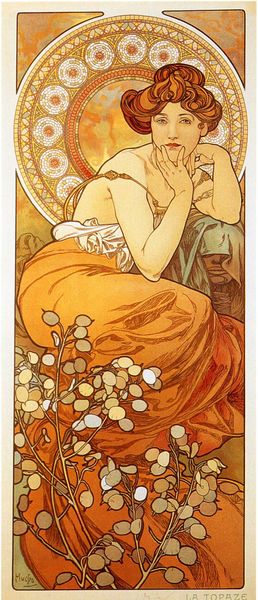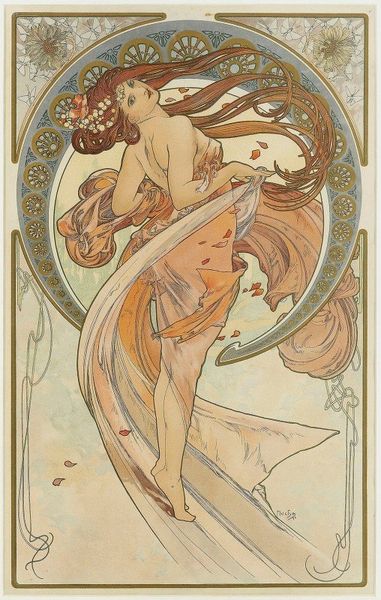
graphic-art, lithograph, print, poster
#
graphic-art
#
art-nouveau
#
lithograph
# print
#
symbolism
#
decorative-art
#
poster
Copyright: Public Domain: Artvee
Curator: This lithograph by Alphonse Mucha, created in 1897, is titled "La Samaritaine." Editor: It's utterly enchanting! The color palette evokes such a feeling of serene, ethereal beauty, doesn’t it? There’s almost a shimmering quality to the woman depicted. Curator: Mucha was, of course, a master of Art Nouveau, a movement that sought to integrate art into everyday life, and you can really see how these decorative works transformed public space and advertising at the turn of the century. It’s a theater poster, a large-scale print used to advertise a specific theatrical play, which is indicated by the details beneath the central image. Editor: The way he uses line is particularly striking. See the way the hair flows, almost merging with the water vessel? And then there's the background, intricate yet balanced; the woman truly feels integrated into the geometric and floral shapes, echoing the essence of symbolism that permeates the composition. I think, with Mucha, he really knew the perfect way to draw his subject and his setting in perfect cohesion. Curator: Absolutely. Mucha leveraged these graphic designs to create recognizable associations with performing stars like Sarah Bernhardt, which acted to support their roles as personalities and as products to consume, reflecting Parisian consumerism, the influence of advertising, and the celebration of the actress and her talents. Editor: Looking closely at Sarah’s garments, the play of the white linen contrasting the red clay pitcher gives off a striking compositional rhythm between a woman, a container of sorts, and something living or born of the water itself, which suggests both the physical thirst and the woman's state of seeking some sort of quenching experience in life. Curator: Right, and that element is amplified given that this character is known as The Samaritan Woman or Woman at the Well from the Gospel of John in the Bible, lending an emotional intensity of redemption to Bernhardt’s character, and a sense of new beginnings in an urban world grappling with old value sets. Editor: Ultimately, Mucha’s choices highlight Bernhardt, and her play, by intertwining aesthetics and commerce with compelling symbolism and cultural awareness. Curator: Precisely. A powerful convergence of design, performance, and social commentary, indeed!
Comments
No comments
Be the first to comment and join the conversation on the ultimate creative platform.
